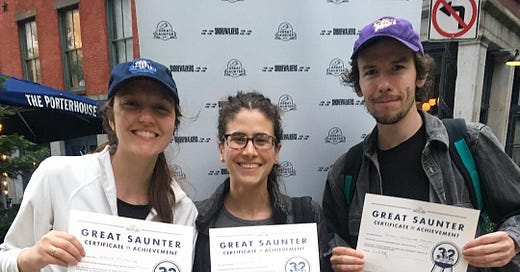I’m sure there are auspicious times to attempt to walk 32 miles around the outer edge of Manhattan but reader, this past Saturday was not one of them.
The ill-omens began early last week, when a rain icon appeared next to the day of the Great Saunter in my weather app. Then, our Friday afternoon flight from Kansas to LaGuardia was summarily cancelled, an…
Keep reading with a 7-day free trial
Subscribe to Pinch of Dirt to keep reading this post and get 7 days of free access to the full post archives.


